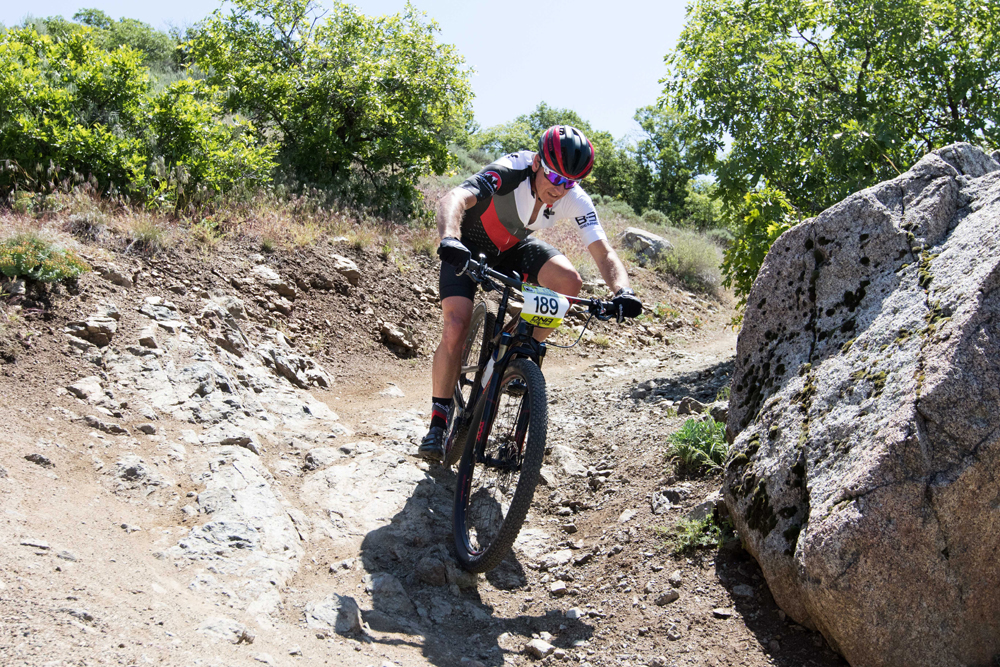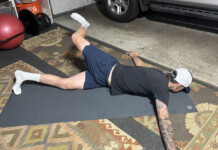By John Higgins — Google “bike fitting for mountain bikers” and peruse some forums and the results are high on opinion and generalities and low on useful information. As a competitive mountain biker myself, who experienced a transformational riding experience as a result of a bike fit (by someone else), I’m always intrigued by the general attitude of dismissal that mountain bikers have for bike fitting. Would all mountain bikers’ benefit from a bike fit? Maybe, which is a yes for some riders and a no for others. Compared to road cycling, there are a lot more variables at play in mountain biking, and fit is only one of those. It’s probable that some of the other variables are more limiting to a rider’s experience than their bike fit, but that is not to say fit is irrelevant.

Compared to riding a road bike on pavement, mountain biking on trails:
- Is more of a whole body workout and can be a lot more physically demanding
- Requires a more dynamic riding style of being in and out of the saddle and general movement on and over the bike
- Requires a different (arguably higher) level of bike handling skill
- Alternates between efforts of low power (descending when not pedaling) to high power (steep climbs)
- Has more “bike set up” variables including tire choice, tire pressure, suspension settings, saddle height (dropper post)
All this means mountain biking is more demanding on the body, but there is often frequent interruption to a static body position and steady repetitive action that are hallmarks of road cycling, and this often serves to disguise or mask any issues with a fit position.
The primary drivers of fit on a bicycle are: comfort, efficiency, power, aerodynamics and control.
Comfort is king because if you are not comfortable riding is not enjoyable, and if it is not enjoyable, why ride? OK, some of you will say for the suffering, because you like to suffer. But there is comfortable suffering and uncomfortable suffering. Comfort also impacts all the other fit drivers. What’s comfort? The absence of aches and pains, both short term (during and after a ride) and long term (maintain healthy joints, muscles and connective tissue). Aches and pains can be a result of:
- Being out of shape for the duration and intensity of riding you are doing
- From pre-existing injuries, or functional movement limitations from modern lifestyles
- A poor boy position on your bike, creating bio-mechanical and equipment – induced stress.
If you cannot go mountain biking without a dose of Advil before, during or after, then something is up. Improving comfort may require getting in shape by not only riding regularly, but also doing off bike strength and conditioning training, which could include body weight movements, weights, yoga or pilates. If discomfort persists when you know you are in shape, then the cause may well be equipment-induced, i.e. your body position on the bike.
Power and Efficiency are going to be determined by your physical and physiological conditioning, pedaling technique, terrain reading and gear selection. If your saddle height is too low or high, then that can detract from optimal power generation, and if you are too cramped or stretched from saddle to bars, then that can detract from efficiency and comfort, but there may be a lot to work on before your bike fit position becomes the limiter.
Aerodynamics is largely irrelevant for mountain bikers, but may factor in slightly for long distance endurance racers.
Control is about being able to safely handle your bike, negotiate the terrain, and stay upright and on the trail. It’s about maintaining traction, cornering, descending, climbing, and negotiating obstacles by being able to move your body about the bike by keeping your center of mass low and balanced. Control is almost assumed on a road bike. On a mountain bike it is of critical importance, and should not be overlooked. Other than bike style and geometry, the big factors affecting control are rider skill, bike set up and bike fit.
Rider skills camps have boomed in popularity in the past few years as many mountain bikers have realized their bikes are way more capable than they are. Bigger gains can be had from learning how to ride your bike better, not by spending up on the latest heavily marketed product innovation. If control is lacking, then it is likely that riding skill is also lacking. Mountain biking is not an intuitive natural activity. It takes learning and practice.
Bike set up and bike fit are closely linked, and a thorough mountain bike fit will include attention to set up. Set up deals with the mechanical variables of suspension setting, tire selection and pressure. Bike fit deals with your direct contact points to the bike (feet to pedals; butt to saddle; hands to bars), and your body position on the bike. Being centered and balanced on the bike and able to easily move around over the bike is very important for maintaining control. If your center of mass is too far back, the front wheel will have a tendency to wander. Uphill this will make it harder to maintain a line; and in corners the front wants to slide out. If your center of mass is too far forward you can lose traction climbing, have trouble unweighting the front end to negotiate step-ups or washouts and be more prone to endo-ing on technical descents. Now a lot of this has to do with skill, but a better position makes the application of skill easier, and with less body input.
So would you benefit from a bike fit? Probably not, if it is your fitness or skills that are holding you back, or you ride easy trails at low intensity for shorter (under 2 hours) time periods. But if you have persistent aches or pains; you have bought a new bike and your bike control feels worse, not better; or you have competitive intentions and want to optimize your potential, then give it some consideration. By all means experiment with your own fit position. Mountain bikers are often self reliant do-it-yourself types. I’m one of them. I’d rather work on my own bike than take it to a shop, but when I can’t figure something out or fix it myself, I’ll take it to a shop. Next month – some “how to’s” on figuring it out for yourself.








